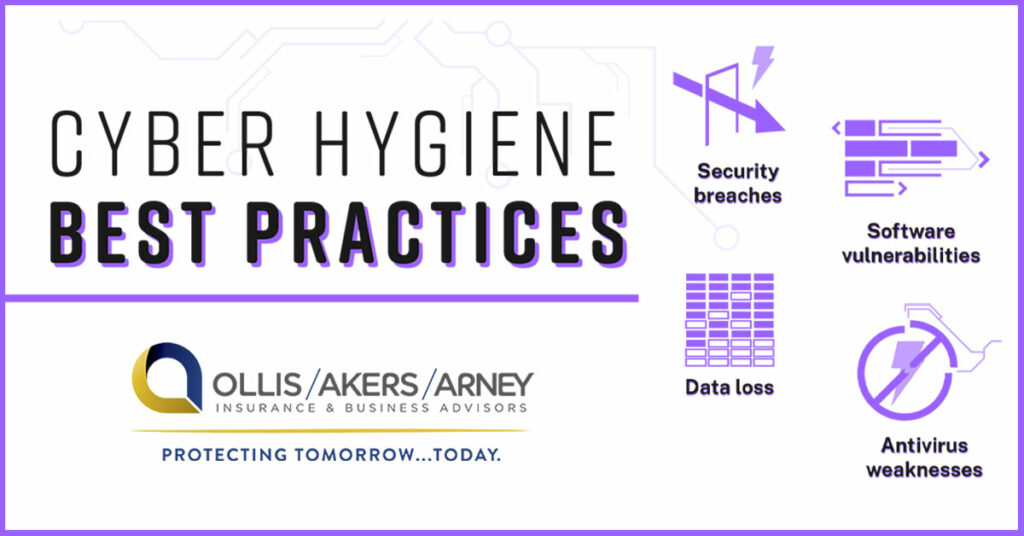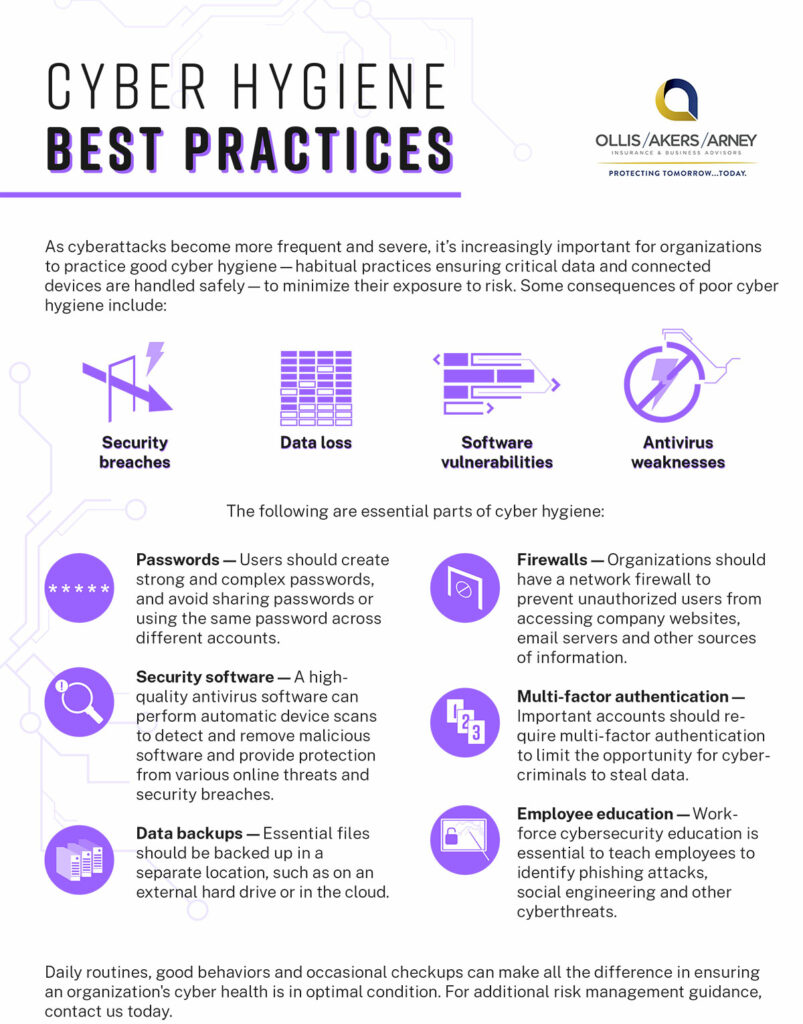As cyberattacks become more frequent and severe, it’s increasingly important for organizations to practice good cyber hygiene—habitual practices ensuring critical data and connected devices are handled safely—to minimize their exposure to risk. Some consequences of poor cyber hygiene include:
- Security breaches
- Data loss
- Software vulnerabilities
- Antivirus weaknesses
The following are essential parts of cyber hygiene:
- Passwords—Users should create strong and complex passwords, and avoid sharing passwords or using the same password across different accounts.
- Security software—A high- quality antivirus software can perform automatic device scans to detect and remove malicious software and provide protection from various online threats and security breaches.
- Data backups—Essential files should be backed up in a separate location, such as on an external hard drive or in the cloud.
- Firewalls—Organizations should have a network firewall to prevent unauthorized users from accessing company websites, email servers and other sources of information.
- Multi-factor authentication— Important accounts should re- quire multi-factor authentication to limit the opportunity for cyber- criminals to steal data.
- Employee education—Work- force cybersecurity education is essential to teach employees to identify phishing attacks, social engineering and other cyberthreats.
Daily routines, good behaviors and occasional checkups can make all the difference in ensuring an organization’s cyber health is in optimal condition. For additional risk management guidance, contact us today.



